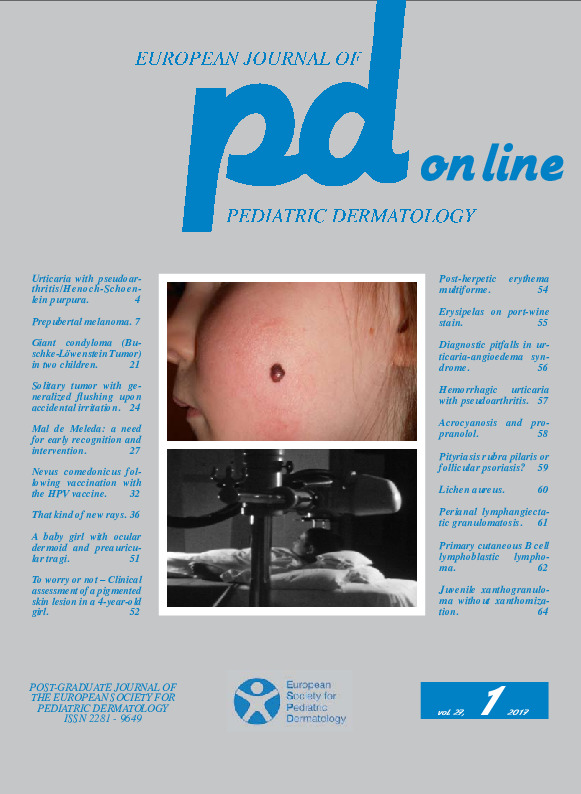Perianal lymphangiectatic granulomatosis.
Downloads
DOI:
https://doi.org/10.26326/2281-9649.27.1.1331How to Cite
Bonifazi E. 2017. Perianal lymphangiectatic granulomatosis. Eur. J. Pediat. Dermatol. 27 (1): 61. 10.26326/2281-9649.27.1.1331.
pp. 61
Abstract
Orofacial and anogenital granulomatosis represent two aspects of the same chronic inflammatory disease of unknown etiology but related to Crohn’s disease (2). This granulomatosis is clinically characterized by initially of short duration and self-healing, but later persistent edema; characteristically, several months after the onset edema is associated with clinically evident, sometimes painful lymphangectasias. When there are lymphangiectatic vesicles the disease can be hardly differentiated form lymphangioma: the latter is not associated with evident inflammation, its vesicles are often hemorrhagic and the histology shows no granulomatous infiltrate. Topical, intralesional and systemic corticosteroids are the most effective therapy of orofacial and anogenital granulomatosis. In the literature, there are also cases of adults successfully treated with azathioprine (1) and anti-TNF biologics.Keywords
Granulomatosis, lymphangiectasia, Crohn’s disease

